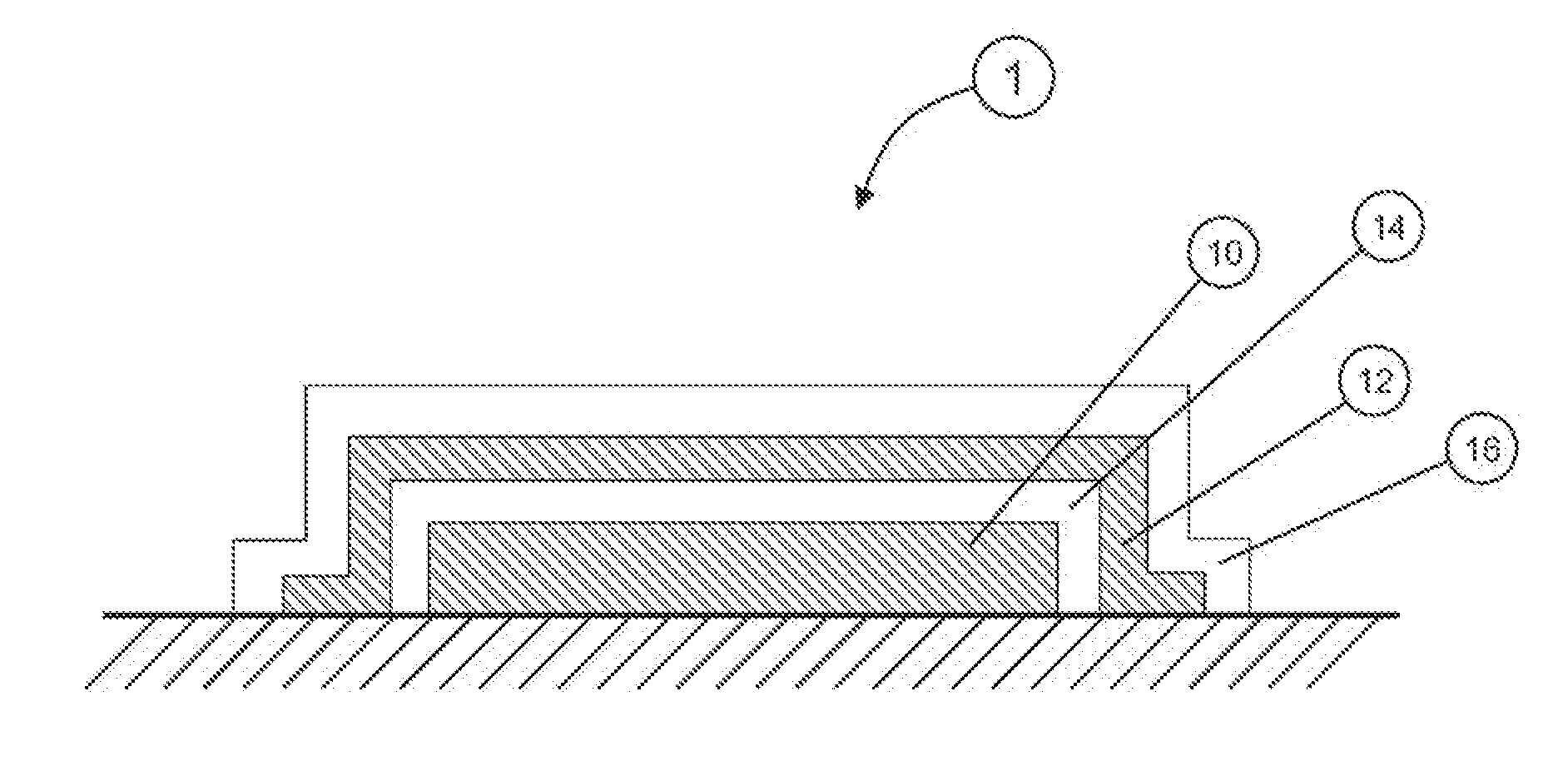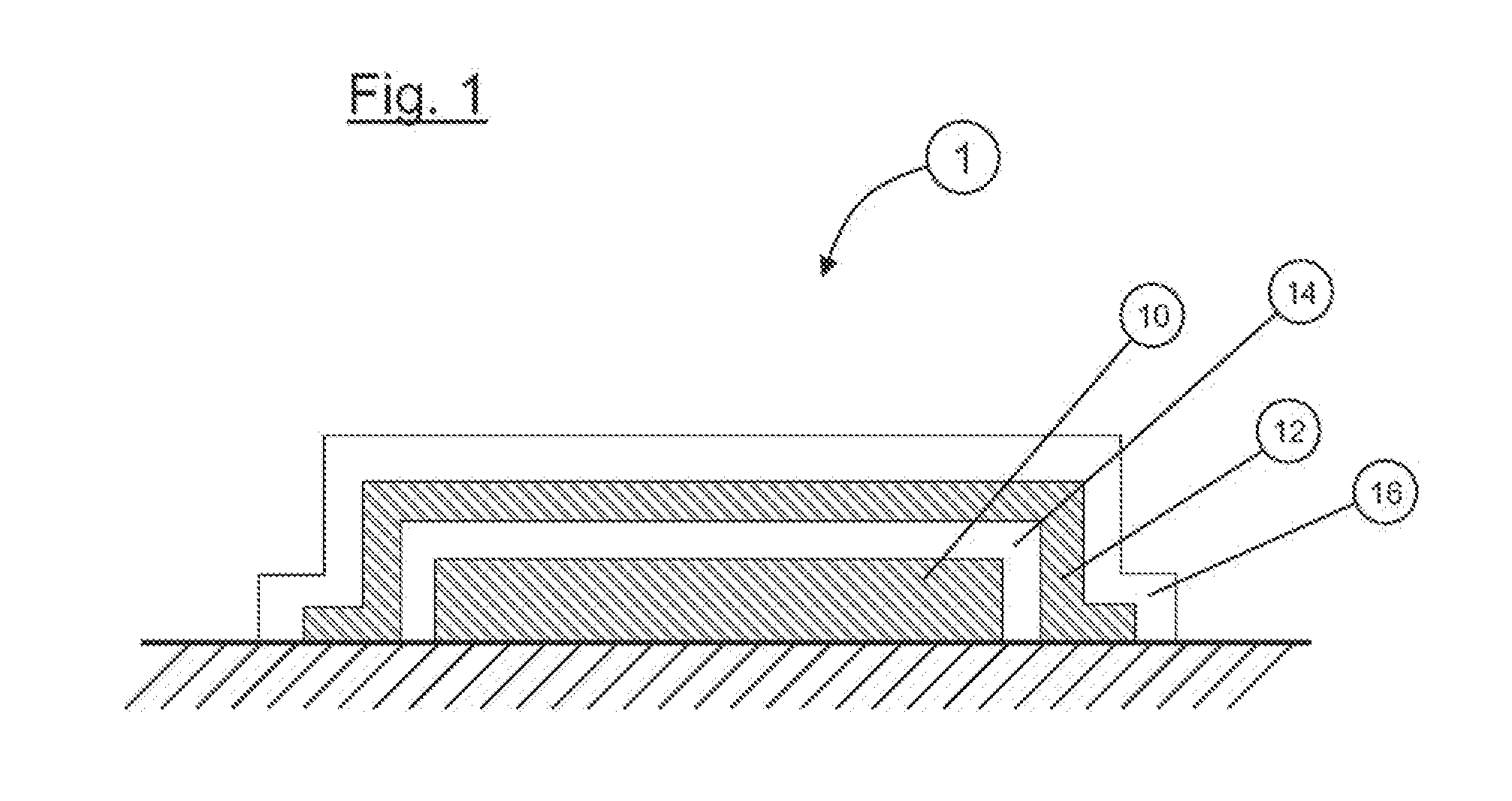Thermal interface material and method of making and using the same
a technology of thermal interface material and method, applied in the direction of chemistry apparatus and processes, semiconductor devices, lighting and heating devices, etc., can solve the problem of adverse effects on the performance of the electronic devices in which they are used
- Summary
- Abstract
- Description
- Claims
- Application Information
AI Technical Summary
Problems solved by technology
Method used
Image
Examples
example 1
[0085]In example 1, 6.5 wt % Kraton® elastomer (a hydroxyl-terminated ethylene butylene copolymer, specialty mono-ol), 1.9 wt % of a microcrystalline wax with a melting point of about 45° C., and 0.10 wt % Irganox® 1076 were combined and blended in a heated mixer until the combination had melted and had a substantially homogeneous appearance. 0.7 wt % Titanium IV 2,2 (bis 2-propenolatomethyl)butanolato, tris(dioctyl)pyrophosphato-O was added, and the combination was blended, again until the combination had a substantially homogeneous appearance. 90.8 wt % of Aluminum powder was added, and the combination was again blended until it had a substantially homogeneous appearance. The coupling agent did not appear to be completely miscible with the combination of elastomer, wax and antioxidant.
[0086]The thermal interface material was then taped between liner films at 90° C. for 15 minutes, and cut to a 10 mm square. The liners were removed and the square sample placed between a nickel-coat...
example 2
[0087]Example 2 was prepared according to the procedure described above with respect to Example 1. The types and amounts of the different components were also the same as in Example 1, except that Zirconium IV 2,2 (bis 2-propenolatomethyl)butanolato, tris(diisooctyl)pyrophosphato-O was used in place of the Titanium IV 2,2 (bis 2-propenolatomethyl)butanolato, tris(dioctyl)pyrophosphato-O, and Honeywell low density polyethylene A-C® 617 wax (a low-density, low molecular weight polyethylene homopolymer having a Mettler Drop Point of 101° C. by ASTM D-3954 and an ASTM D-5 hardness of 7.0 and a density of 0.91 g / cc by ASTM D-1505) was used in place of the wax used in Example 1. The coupling agent did not appear to be completely miscible with the combination of elastomer, wax and antioxidant. This TIM was used to produce a test sandwich, as described with respect to Example 1, and the test sandwich was subjected to HAST conditions for 96 hours. The material passed HAST. In addition, the t...
example 3
[0088]Example 3 was prepared according to the procedure described above with respect to Example 1. The types and amounts of the different components were also the same as in Example 1, except that the amount of Kraton was 6.2 wt % and the amount of antioxidant was 0.50 wt %. In addition, the wax of Example 1 was replaced with 1.8 wt % Lucant® oil. The coupling agent did not appear to be completely miscible with the combination of elastomer, oil and antioxidant. This TIM was prepared and tested as described above with respect to Example 1. The test sandwich passed HAST, and the thermal impedance of the material actually decreased (the thermal impedance was 0.11° C.·cm2 / W and after HAST testing and 0.10° C.·cm2 / W after HAST testing).
PUM
 Login to View More
Login to View More Abstract
Description
Claims
Application Information
 Login to View More
Login to View More - R&D
- Intellectual Property
- Life Sciences
- Materials
- Tech Scout
- Unparalleled Data Quality
- Higher Quality Content
- 60% Fewer Hallucinations
Browse by: Latest US Patents, China's latest patents, Technical Efficacy Thesaurus, Application Domain, Technology Topic, Popular Technical Reports.
© 2025 PatSnap. All rights reserved.Legal|Privacy policy|Modern Slavery Act Transparency Statement|Sitemap|About US| Contact US: help@patsnap.com



